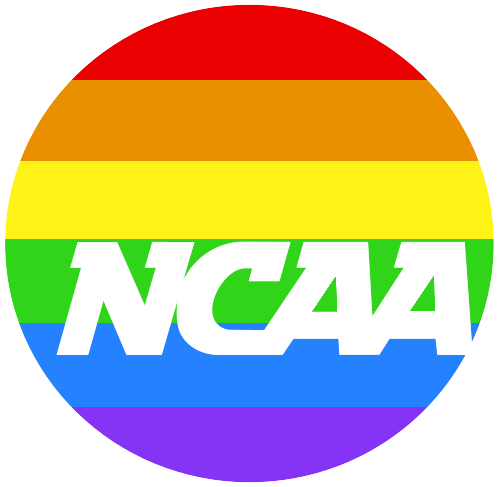College athletics more inclusive to LGBTQ+ athletes

Megan Calvin, Staff Artist
The stress of a college student knows no bounds. The four-year introduction to adulthood can offer young adults a great deal of pressure. This pressure skyrockets for student athletes. For 69 student athletes in the 2017-18 academic year, there is another factor that could potentially add to the already existing pressure.
The one thing that these 69 athletes – from all levels of college sports – have in common is that they publicly identify as lesbian, gay, bisexual, transgender or queer. To date, that is the greatest number of out LGBTQ+ athletes in college sports to be enrolled in colleges and universities in one academic year. This is a sign of optimism for queer athletes at the college level. Since more of them are living openly about their identities, they can serve as an inspiration for more to come regardless of any potential controversies they might face.
On record, there have been a total of 174 out LGBTQ+ athletes who have come from Power Five Conference schools. These conferences include the Atlantic Coast Conference, the Southeastern Conference, the Pac-12 Conference, the Big Ten Conference and the Big Twelve Conference. Most of these athletes have come from the Pac-12 Conference. The universities that have had the most publicly out LGBTQ+ athletes are Stanford University, Purdue University and the University of California at Berkeley.
The history of LGBTQ+ athletes is extensive. There is a decades-long trend of discrimination and oppression that eventually shifted to a period of increased acceptance of LGBTQ+ athletes in the sports community. Acceptance, however, has not always led to equal opportunity.
For example, Michael Sam, former defensive end at University of Missouri and the 2014 Defensive Player of the Year in the Southeastern Conference, came out as gay in February 2014. He became the first openly gay football player signed to a team in the NFL when he was drafted by the St. Louis Rams, but he was cut right before the final roster. He then had a short run with the Dallas Cowboys before being signed to a team in the Canadian Football League. Sam eventually left for personal reasons.
Kye Allums of the George Washington University’s women’s basketball team came out as a transgender man in November 2010 but wanted to continue playing for the women’s team. In a controversial decision, the school allowed him to do so as long as he was not yet going through hormone treatment. This brought a lot of attention to Allums, who would not return to the court his senior year after suffering two concussions during the prior season.
Sam and Allums are only two of many who have made great leaps for queer athletes. They serve as inspirations for queer young adults who strive to make a name for themselves in the sports community.
Now, we have the most out LGBTQ+ college athletes enrolled in an academic year.
Universities must continue to make their campuses open and inclusive spaces to encourage young athletes to be themselves and perform well. They must serve as an example of how sports can be inclusive so that professional sports leagues will one day follow suit and be more welcoming to those of all identities. We should no longer ignite controversies around the identities of college athletes. The emphasis should be on how they perform, not how they identify.
This is an opinion article and does not reflect the views of The Tulane Hullabaloo. Daniel is a senior at Newcomb-Tulane College. He can be reached at [email protected].
Your donation will support the student journalists of Tulane University. Your contribution will allow us to purchase equipment and cover our annual website hosting costs.
















Leave a Comment